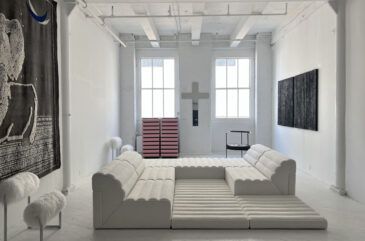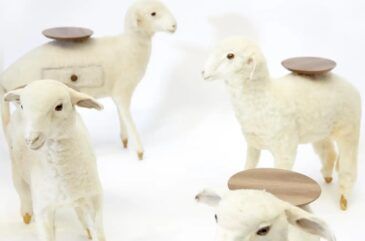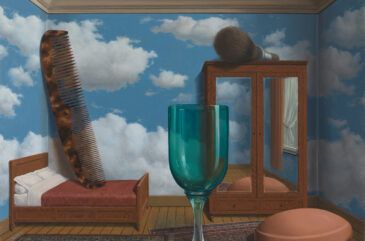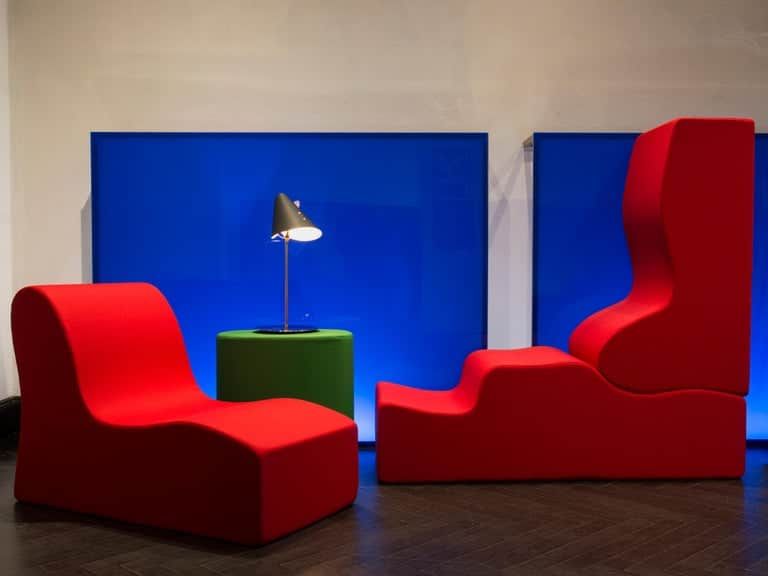
“The function of art,” the Surrealist Roberto Matta (1911–2002) once stated, “is to unveil the enormous economic, cultural and emotional forces that materially interact in our lives and that constitute the real space in which we live.” In his paintings, Matta sought to expose those forces through the Surrealist practice of automatism, creating work in a free-associative state intended to conjure the unconscious.
After studying architecture in his native Chile, Matta, then 22, chose to pursue the field in Paris, where he mingled with stars of the avant-garde like Gertrude Stein, Salvador Dalí and Walter Gropius. In the late 1930s, he abandoned Paris, together with his job at Le Corbusier’s studio and (for a time) his career, for modern art’s new epicenter, New York City. There, he became a colleague of art legends like Marcel Duchamp and Arshile Gorky.

Although celebrated primarily for his work as a painter, Matta was an equally talented furniture designer. These pieces, like his artworks, are the stuff of dreams. The back of his totem chair, for example, is composed of smiling, cartoonish creatures stacked on top of each. In his MAgriTTA armchair, the top half of a plush green apple sticks out of large black bowler in homage to its namesake, the Belgian Surrealist René Magritte.
But perhaps the piece that most truly embodies his artistic philosophy is his 1966 Mallite modular system: a collection of spongy, undulating sofas and lounges that can be fitted together to form a puzzle-like room divider. The work, an original edition of which is in MoMA’s permanent collection, has in recent decades been a hard-to-find collectors’ item — until this year, when Italian design brand Paradisoterrestre issued a reedition, available through Duplex.
The Study spoke with Paradisoterrestre owner Gherardo Tonelli to find out more about the remarkable piece and its maker.
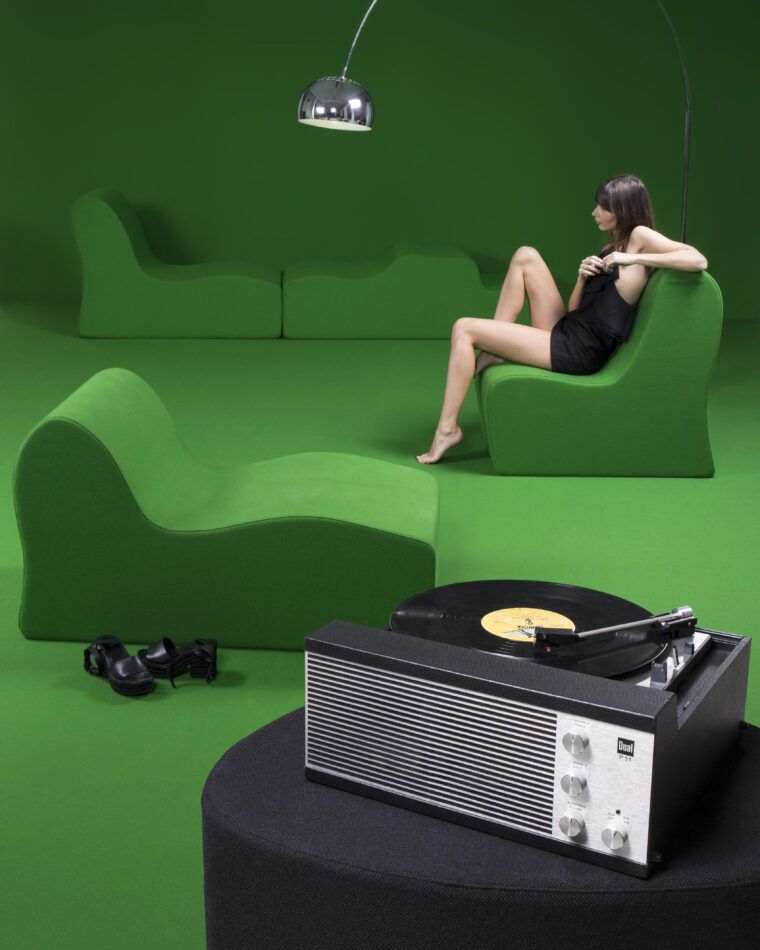
Roberto Matta is known primarily as a prominent Surrealist and abstract expressionist painter. Where do you think furniture design fits into his larger story?
Roberto Matta was a polyhedric artist, at the crossroads of art, design and craft. While he is mainly known as a painter, the exhibition “CasaMatta,” held at the Triennale Milano in 2012, shed light on lesser-known aspects of his multifaceted career.
His furniture design was strongly interconnected with his art: Each creation was the result of a vision, no matter how it was labeled. One can directly experience this borderline realm walking into his last retreat — la Bandita, in Tarquinia, Italy — where art and furniture are in incessant dialogue, telling the story of one of the most interesting creative talents of the past century.
Walk us through the process of reissuing the Malitte system.
Actually, we started our collaboration with Alisée Matta, the artist’s daughter, with the reedition of the Margarita and Sacco Alato bronze armchairs. These two seminal pieces were designed by Roberto Matta as part of the Ultramobile collection, which was conceived by Dino Gavina in 1971 with the aim of adapting Surrealist objects for daily use. We previewed the reedition of these “functional works of art” in the exhibition “UltraMatta,” which took place in our recently inaugurated gallery in the Bologna city center in January, during ArteFiera.
After this first successful operation, we decided together with Alisée to reissue another iconic piece that her father designed for Gavina: the Malitte seating system, whose reedition was previewed during Milan Design Week in the spring. We’re planning to present an outdoor version in the near future. We are also thinking about the reedition of some beautiful carpets with original drawings by Matta.
Did you run into any snags with the Malitte’s production?
The main difficulty was finding the perfect cover for the seating system. The fabric had to follow its distinguishing organic shapes, so we use a slightly elastic material.

What do you see as the defining features of Matta’s furniture? Do you think they differ from the trademarks of his visual art?
Malitte, with its playful, colorful twist and organic shapes, matches harmoniously with Matta’s artistic production. Other pieces, like the Margarita, Sacco Alato and MAgriTTA, with their ironic yet mysterious mood, are deeply rooted in Surrealism. Both his artistic and his furniture production a imbued with Matta’s multicultural roots and life experiences.
MoMA’s description for Malitte is really illuminating about this undeniable connection: “Its interlocking organic shapes reflect Matta’s training as an architect in his native Chile as well as his Surrealist painting practice, which developed after his move to Paris.”
Why do you think Matta was drawn to create such changeable, functional furniture?
Malitte should have been a revolution back in the mid 1960s. It really mirrors the major society changes brought on by pop culture. Like every masterpiece, it feels contemporary even today, after more than 50 years!

